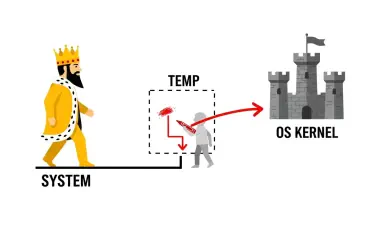Artificial intelligence (AI) is revolutionizing various industries, and the field of accounting is no exception. For certified public accountants (CPAs), the integration of AI presents both opportunities and challenges. Effective AI risk management is crucial to harnessing the benefits of AI while mitigating its risks. This article explores essential AI risk management practices for CPAs, highlighting common pitfalls to avoid.
AI technology offers significant potential for improving efficiency and accuracy in accounting processes. However, it also introduces new risks that must be carefully managed. CPAs play a critical role in ensuring that AI is implemented responsibly and that its risks are adequately addressed. By leveraging existing governance practices, developing a deep understanding of AI, and adopting recognized risk management frameworks, CPAs can navigate the complexities of AI integration.
Leveraging Existing Governance Practices
Adapting Current Governance Structures
One of the key principles in AI risk management is the importance of leveraging existing governance practices. Organizations should not create entirely new governance structures exclusively for AI. Instead, they should adapt their current governance processes to address AI-specific nuances. This approach ensures consistency and efficiency in managing AI risks.
Leadership must be aware of AI’s impact on the organization and ensure that regulatory obligations and stakeholder expectations are met. A robust exception process should be in place to handle any deviations from established practices due to AI. By integrating AI risk management into existing governance frameworks, organizations can maintain a cohesive approach to risk management.
Rather than treating AI as a completely foreign entity, organizations can benefit from viewing it as an extension of existing technologies and processes. By doing so, they can leverage their current risk management tools and practices, minimizing the disruption that often accompanies new technological implementations. This not only streamlines the risk management process but also enhances overall organizational coherence and efficiency.
Ensuring Leadership Awareness
Effective AI risk management requires that organizational leadership is fully aware of the implications of AI. Leaders must understand how AI affects various aspects of the organization, from operational processes to financial reporting. This awareness enables them to make informed decisions and provide the necessary oversight.
CPAs should facilitate discussions with leadership to ensure that AI-related risks are adequately addressed. This includes educating leaders about the potential benefits and risks of AI, as well as the importance of adhering to established governance practices. By fostering a culture of awareness and accountability, CPAs can help organizations navigate the complexities of AI integration.
A proactive approach to leadership engagement can significantly enhance the organization’s risk management posture. When leaders are well-informed, they are better equipped to support risk mitigation strategies and allocate the necessary resources. Furthermore, transparent communication about AI’s potential and its risks can build trust and foster a collaborative environment, essential for successfully managing AI-related challenges.
Developing a Core Understanding of AI
Avoiding Superficial Knowledge
A core understanding of AI is essential for effective risk management. Relying on media reports or superficial knowledge can lead to misconceptions and poor decision-making. CPAs must seek trustworthy, in-depth information about AI to communicate effectively with advisors and challenge them when necessary.
Trusted sources such as accounting firm whitepapers or articles from reputable cybersecurity centers can provide a foundational understanding of AI. For instance, the UK’s National Cyber Security Centre offers concise and reliable insights on AI risks. By building a solid knowledge base, CPAs can make informed decisions and provide valuable guidance to their organizations.
To develop a more profound comprehension of AI, CPAs should engage with various educational resources and professional training programs. In-depth studies and technical guidelines can demystify AI algorithms, data processing methods, and security implications, ensuring that CPAs are well-prepared to tackle the associated risks. Developing this expertise is fundamental to effective AI risk management, allowing CPAs to anticipate potential problems and address them proactively.
Continuous Learning and Adaptation
The field of AI is constantly evolving, and CPAs must stay informed about the latest developments. Continuous learning and adaptation are crucial to maintaining a comprehensive understanding of AI and its associated risks. CPAs should regularly engage with professional development opportunities, such as workshops, seminars, and industry conferences.
By staying up-to-date with the latest trends and best practices in AI, CPAs can ensure that their risk management strategies remain relevant and effective. This proactive approach enables them to anticipate potential risks and implement appropriate mitigation measures. Continual education also empowers CPAs to remain competitive and provide the best possible service to their clients and organizations.
Embracing a culture of lifelong learning within the organization can have long-term benefits. Encouraging team members to pursue further education and providing access to the latest AI research and tools ensures that the entire organization remains at the forefront of technological advancements. This collective knowledge growth can significantly enhance the organization’s ability to manage AI-related risks and capitalize on new opportunities that AI technologies afford.
Financial Statement Implications
Impact on Financial Reporting
AI’s impact on financial statement reporting is a critical consideration for CPAs. AI is not merely a tool for increasing revenues or reducing costs; it also significantly affects the accuracy and reliability of financial statements. Issues such as access privileges, erroneous changes, third-party oversight, change management, cybersecurity, and data reliability are all traditional risks that are equally pertinent in the context of AI.
CPAs must be vigilant in considering these factors during audits and financial reviews. By thoroughly assessing the impact of AI on financial reporting, CPAs can ensure that financial statements remain accurate and reliable. This involves implementing robust controls and monitoring mechanisms to address AI-related risks.
AI has the potential to automate and streamline many accounting processes, leading to more efficient and timely financial reporting. However, this automation also increases the risk of unseen errors or biases in the data processing stages. Therefore, CPAs must establish stringent verification protocols and regularly audit AI systems to identify and address any discrepancies promptly. This careful oversight ensures that AI-enhanced financial statements meet the high standards of accuracy and integrity required for reliable reporting.
Addressing Traditional Risks in AI Context
Traditional risks such as access privileges, erroneous changes, and third-party oversight are still relevant in the context of AI. CPAs must ensure that these risks are adequately addressed when implementing AI technologies. This includes establishing clear access controls, monitoring changes to financial data, and overseeing third-party contributions.
Change management and cybersecurity are also critical considerations. CPAs should implement comprehensive change management processes to ensure that AI-related changes are properly documented and reviewed. Additionally, robust cybersecurity measures are essential to protect sensitive financial data from potential threats.
Continuous monitoring and regular reviews of AI systems can help detect and mitigate risks arising from unauthorized access or data alterations. Ensuring that only authorized personnel have access to critical AI systems and data is fundamental to maintaining data integrity. Furthermore, establishing rigorous third-party management practices ensures that external vendors adhere to the same high standards of security and operational excellence required by the organization. These practices collectively contribute to a robust AI risk management strategy.
Adopting Recognized AI Risk Management Frameworks
Utilizing NIST’s AI Risk Management Framework
Adopting recognized AI risk management frameworks is essential for standardizing risk management practices. The National Institute of Standards and Technology’s (NIST) AI Risk Management Framework is a valuable resource for organizations. This framework helps organizations understand and manage AI risks by increasing the trustworthiness of AI systems.
CPAs should utilize such frameworks to facilitate discussions and challenge line executives on risk management. By following established guidelines, organizations can ensure that their AI risk management practices are comprehensive and effective. This structured approach enables CPAs to better anticipate and mitigate the complexities associated with AI technologies.
Frameworks like the NIST AI Risk Management Framework provide a detailed roadmap for identifying, assessing, and addressing AI-related risks. They offer practical tools and guidelines that can be tailored to an organization’s specific needs and conditions. By adopting these frameworks, CPAs can enhance their risk management strategies and ensure that their AI implementations align with industry standards and best practices, thereby increasing the overall reliability and trustworthiness of their AI systems.
Facilitating Cross-Departmental Collaboration
Using established AI risk management frameworks offers a significant advantage by encouraging cross-departmental collaboration. Effective AI risk management depends on the contributions of various departments such as IT, compliance, finance, and operations. Frameworks like the NIST AI Risk Management Framework promote collaboration by providing a shared language and common standards for addressing AI risks.
CPAs play a crucial role in coordinating these efforts, making sure that all pertinent stakeholders are engaged in the risk management process. By fostering a collaborative atmosphere, organizations can create more comprehensive and effective AI risk management strategies. This not only improves their ability to handle AI-related risks but also fosters a culture of accountability and continuous improvement.
These frameworks also support third-party audits and assessments, offering external validation of the organization’s AI risk management practices. Such external perspectives can pinpoint areas needing improvement and highlight best practices, thus strengthening the organization’s risk management approach. By embracing these frameworks, CPAs and their organizations can stay agile and responsive to the ever-changing AI landscape.
In summary, AI risk management for CPAs involves strategies that require robust governance, continuous education, and the adoption of recognized frameworks. CPAs must utilize existing governance structures, gain a deep understanding of AI, and address both traditional and AI-specific risks to ensure financial integrity. By employing structured frameworks and promoting cross-departmental collaboration, CPAs can effectively manage AI risks and ensure responsible implementation, which is crucial for navigating the evolving realm of AI and safeguarding organizational integrity.













